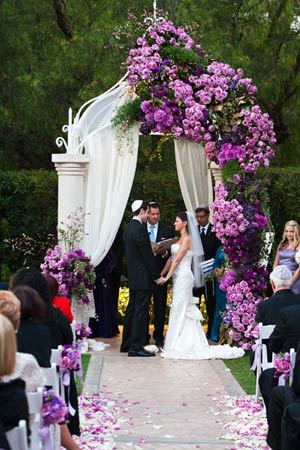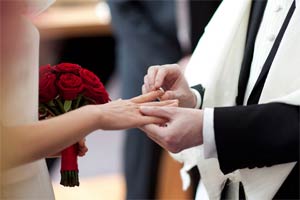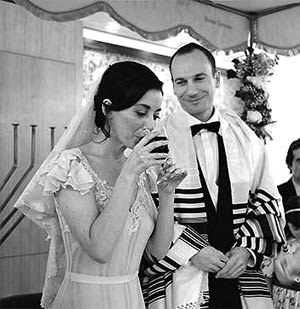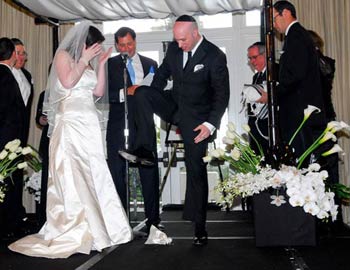Tag: the ceremony
Chuppah

Jewish Wedding: Chuppah
The ceremony takes place under a Chuppah, or wedding canopy. It represents God’s sheltering presence in the lives of the bride and groom, as well as the new home that they will build together. The presence of family under the Chuppah, as well as its lack of walls, signify that their home will always be open to family and friends.
Filed in: Ceremony
Bedeken (Veiling of the Bride)
 Legend has it that this tradition, which means “checking,” dates back to Biblical times, when Jacob was tricked by his father-in-law Laban. Jacob was presented with an already-veiled bride; he discovered only after the ceremony that she was not his intended bride, Rachel, but instead her sister, Leah. Often we will include Veiling of the Bride either immediately following the Ketubah signing, or as part of the processional to the Chuppah. By checking under the veil, the groom indicates that he is sanctifying the bride to be his wife.
Legend has it that this tradition, which means “checking,” dates back to Biblical times, when Jacob was tricked by his father-in-law Laban. Jacob was presented with an already-veiled bride; he discovered only after the ceremony that she was not his intended bride, Rachel, but instead her sister, Leah. Often we will include Veiling of the Bride either immediately following the Ketubah signing, or as part of the processional to the Chuppah. By checking under the veil, the groom indicates that he is sanctifying the bride to be his wife.
Filed in: Ceremony
Erusin (Betrothal)

Jewish Wedding: Erusin
According to Jewish law, the giving and accepting of an item of value in the presence of witnesses is what sanctifies a marriage. Therefore, in modern times, the bride and groom exchange rings as they declare to one another, in Hebrew and in English, “Behold, you are consecrated to me with this ring, in accordance with the laws of Moses and Israel.” Typically, the rings are solid, without any breaks or stones, signifying the wholeness and union achieved through marriage. The rings are placed on their right index fingers, due to the ancient belief that the forefinger is connected by a direct line to the heart. After which, they can be moved to the ‘ring finger’ on one’s left hand.
Filed in: Ceremony
Nissuin (Nuptials)

Jewish Wedding: Nissuin
The second section of the wedding ceremony begins the Sheva Brachot, or seven benedictions, which are recited over a cup of wine. The blessings thank God for the fruit of the vine, the creation of the world, the creation of human beings, the perpetuation of life, the survival of the Jewish people, the joy of marriage, and the bride and groom’s happiness.
Filed in: Ceremony
Breaking of the Glass

Jewish Wedding: Breaking of the glass
At the conclusion of the ceremony, it is customary for the groom to break a glass. The breaking of the glass has several meanings. Some consider it a reminder of the destruction of the Temple in Jerusalem in the first century, for even at the height of personal joy, we must not forget the tragedies that our people have endured. Others explain that the fragile glass reminds us of the delicate nature of marriage, which must always be cared for and cherished. At the sound of the breaking of the glass, guests traditionally clap and chant “Siman Tov” and “Mazal Tov,” Hebrew phrases which offer congratulations and good luck to the couple.
Filed in: Ceremony

